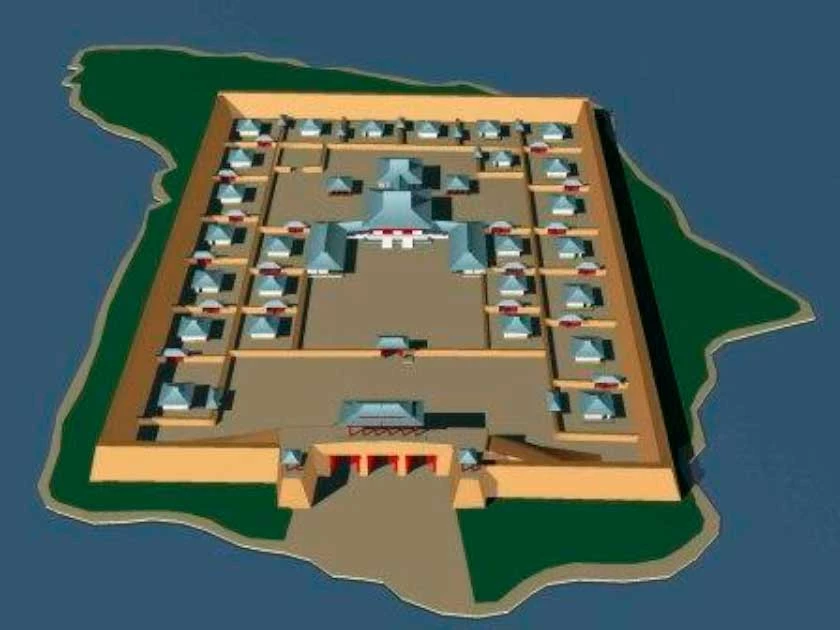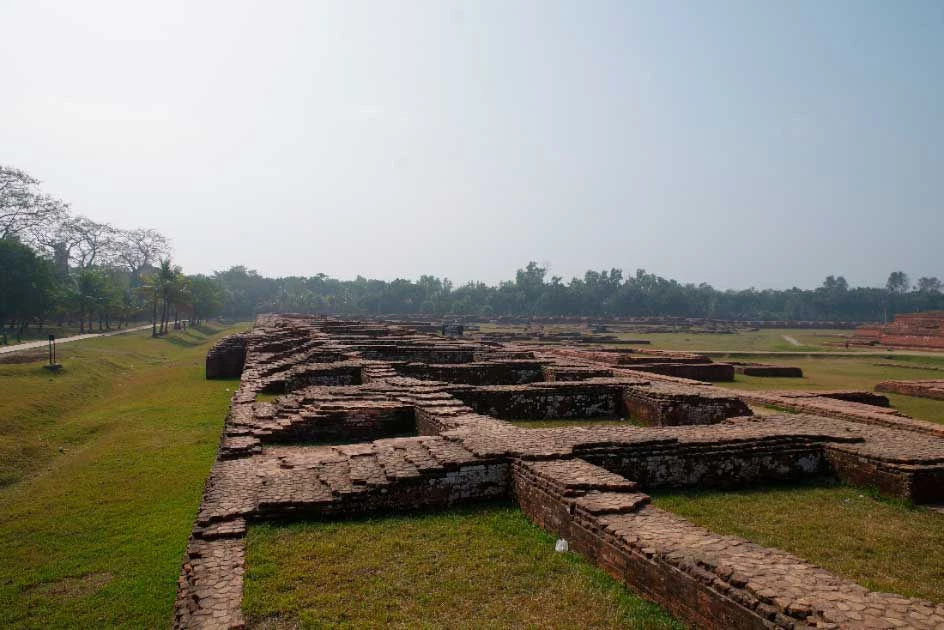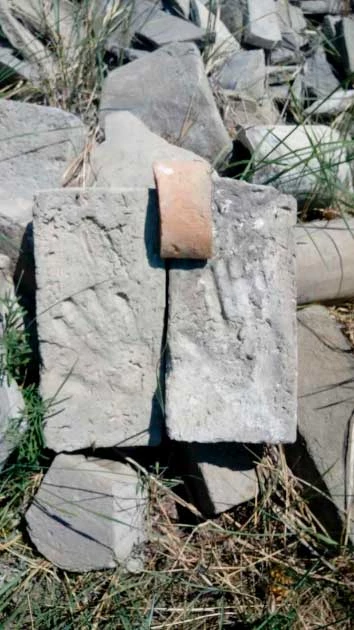Siberia, Russia, with its sub-zero winters and brief, warm summers is an isolated and mysterious place. Much of the country here is uninhabited, far from population centers and trade routes to the south.
But evidently this country was very important at one point, for in the furthest reaches of southern Siberia, near the Mongolian border, lies a great fortress. Situated on an island in the middle of a large lake, the site is named for the ruins of a large crumbling wall around the island’s perimeter: Por-Bazhyn (Russian:Пор-Бажын, Tuvan: Пор-Бажың) meaning “clay house”.
This “clay house” fortress, almost 1,300 years old, looked unlike anything else built in the area at the time. And nobody knows what it was for.
Por-Bazhyn
Por-Bazhyn (also Por-Bajin) are the ruins of a large walled structure found on an island in Lake Tere-Khol, in the Republic of Tuva in southern Siberia, Russia. The Republic of Tuva lies in the middle of the border between Russia and Mongolia, and shares much of both cultures. The two official languages of Tuva are Russian and Tuvan, a mix of Russian, Mongolian, and Turkish.
Por-Bazhyn was once connected to mainland Tuva, but over the centuries the land connecting the fortress to the lake shores has disappeared, creating an island. The ruins themselves are large, with a mighty curtain wall enclosing a great rectangular open space within.
Contained in this fortress are the remains of structures, surrounded by several small and two large yards, three gates, ramps, and what has been called “a wooden fighting stage”. But what happened here is unknown: we can identify the framework and understand the building methods of Por-Bazhyn, but we don’t see the purpose of this large building in Siberia, or even who the builders were.

Por-Bazhyn is not a new discovery, either. It has been known since the 18th century, but it was not explored until 1891. Russian archeologist, ethnographer and historian Sevʹyan Izrailevich Vainshtein explored the island in the 1950s, performing limited excavations.
He wanted to continue exploring this part of Siberia, even though the Soviet Union had assumed nobody could or would live there. Tuva has a population of only 320,000 (as recorded in the 2018 census) and is a unique part of Russia.
The excavation conducted by Vainshtein and a team of scientists was the first at Por-Bazhyn. Vainshtein believed the structure was a fortress built during the third Uyghur Khaganate in the 8th century.
The team realized that the layout of Por-Bazhyn was very similar to Karabalghasun (also known as Ordu-Baliq), the capital of the Uyghur Empire, a Turkic empire that ruled the region in the 8th and 9th centuries. Both ruins consisted of an area with the same type of walls surrounding structures that looked like foundations of houses with a large area in the center that was likely a large home or palace.
- The Sky Fortress Of Kuelap And Cliffside Mummies Of The Chachapoyas
- Who Built the Abandoned City of Djado? A Saharan Mystery
It would be 2007-2008 before another team of Russian scientists returned to excavate a much larger area. The team was made of geophysicists, archaeologists, historians, geomorphologists, hydrologists, and soil scientists. What this excavation uncovered only made the ruins of Por-Bazhyn more perplexing.
New Discoveries, New Questions
During the 2007 excavation, the team learned what may have left Por-Bazyhn in ruin. The scientific team, using archaeology and geomorphology, discovered an earthquake that occurred during the 8th century.
This quake happened when the “fortress” was being constructed, and possibly was the root cause of the site being abandoned entirely in the early 9th century. The team couldn’t find any other sources that indicated why it was deserted, leaving only the earthquake hypothesis.
A second catastrophic earthquake occurred in the 9th century. That second earthquake caused several fires, leaving charred wood inside the walls.
The scientists also discovered that the walls were built using a Chinese method called “hangtu”, popular in the Tang Dynasty from 618 AD to 907 AD. Layers of earth and clay were rammed into a wooden frame, creating a strong, durable structure using materials which came easily to hand.
Using radiocarbon dating and dendrochronology (a method for dating archaeological artifacts by using and studying the annual growth ring in timber and tree trunks) the team learned that the ruins began construction in 777 AD. Some of the questions were at last being answered.
But nothing found during the excavations revealed anything at the core of the mystery. Who built the fortress, who occupied it, what it was used for and why it was so isolated: all these remain a mystery.
In fact, knowing the year Por-Bazhyn was built only led to more confusion. In the 8th and 9th centuries the Uyghurs were tribal groups of nomadic Turkic peoples: not the type to build permanent settlements, let alone anything of this size.
Another mystery was that the scientists could not find any remains of stationary heating systems, which were considered essential if the fortress was to remain inhabited during the brutal Siberian winters. Such systems had found in the 14 other Uyghur urban sites discovered in Tuva. The lack of a heating system would indicate the site could have been a summer home, but only usable for a short time.
Was it Ever a Fortress?
Despite the discoveries during the excavation from 2007 to 2008, the purpose of Por-Bazhyn is still a mystery. But, considering the area’s history, there are a few possibilities for what Por-Bazhyn had been used for. Vainshtein, back in the 1950s gave the first suggested explanation, believing the ruins were of a former fortress due to the tall wall built around the area’s perimeter.

While this might indeed have been the purpose, the crew in 2007-2008 discoveries cast doubt on Vainshtein’s assumption. Based on the date of construction of Por-Bazhyn, it has been confirmed the area was part of the territory under the control of the third Uyghur Khaganate.
The Khaganate was in conflict with China for power over territories, which could explain why the site showed Chinese building techniques. Chinese artisans and builders were known at the time to help build a specific type of structure: memorial complexes.
- Temple, Spire or Alien Landing Pad? The Mystery of Somapura Mahavihara
- Cucuteni Trypillia: Why Did These Ancient Europeans Burn Their Homes?
Is it possible that Por-Bazhyn was a pilgrimage destination, some kind of holy site or important location that the nomadic tribes would make a pilgrimage to? If so, the architecture of the site is even more puzzling as there are no structures and foundations that are typically found in Turkic memorial complexes. This is no mausoleum.
There are other possibilities. Considering historic Chinese architecture, Por-Bazhyn looks like a template for the “ideal town”, built on an axis around a large central building. While the site looks like these ideal towns, it also includes elements found in Buddhist monasteries, suggesting multiple cultural influences.
The small house-like areas along the inside walls may have been where monks lived, and the temple would be the large central structure in the center. When looking at paintings from the Tang Dynasty, the shape of the ruins strongly resemble depictions of palaces in the Buddhist concept of “paradise”.
Religion may have been the reason Por-Bazhyn was constructed, and could explain its isolated location. But Buddhism was not the main religion in the region at the time, so the question of who sponsored the construction remains a mystery.
The Khaganate’s ruler during the construction was Khagan Tendri Bögü, and he had a history of aggression towards Buddhists. The Uyghurs under Bögü, after joining Tang forces during a battle at Luoyang in 762 AD, looted the city. When the residents sought shelter in Buddhist temples for safety, the Uyghurs burnt down every Buddhist temple they came across.
Bögü had been converted to Manichaeism, an ancient Persian religion, by a Manichaean priest. Declaring that Manichaeism was the official religion for the entire Uyghur Khaganate, it is considered unlikely that Bögü would have ordered the construction of a large Buddhist site in his kingdom.

Manichaeism began in the 3rd century AD and was based on cosmic energy and a balance between light and dark. The religion includes elements from Iranian religions, Taoism, Buddhism, and Christianity. This could provide a clue: was Por-Bazhyn started as a Buddhist temple, becoming a Manichaean temple when the religion changed.
This of course assumes that Bor-Bazhyn is a temple complex. One problem about Por-Bazhyn being built for religious purposes is that there is zero evidence that any spiritual practice, be it Buddhism or Manichaeism, happened here.
Another strange occurrence at Por-Bazhyn is an occupation layer was never found. An occupation layer is a layer of remains left at an archeological site for one culture. Occupation layers help determine the date and which group of Uyghurs had used or been in Por-Bazhyn. It seems nobody lived here.
Why was Por-Bazhyn Built?
It was predicted by the scientists in 2007 that Por-Bazhyn would eventually become submerged into Lake Tere-Khol. In 2009 the leader of the excavation in Por-Bazhyn two years earlier agreed with her team. She stated that as the permafrost Por-Bazhyn sits on continues to melt, the remaining walls will begin to collapse into the lake in about 80 years.
The world knows more about Por-Bazhyn now than ever before but also knows nothing. What was it built for, why was it abandoned in the early 9th century, and what else is at the site? Not all of Por-Bazhyn was excavated, and a large part of the ruin might have untold secrets yet to share about the history of this area of Siberia. Until then, this great, isolated structure in the depths of Siberia remains a mystery.
Top Image: The ruins of Por-Bazhyn will likely be gone in less than a century. Source: Por-Bajin Fortress Foundation / CC BY 4.0.
By Lauren Dillon
